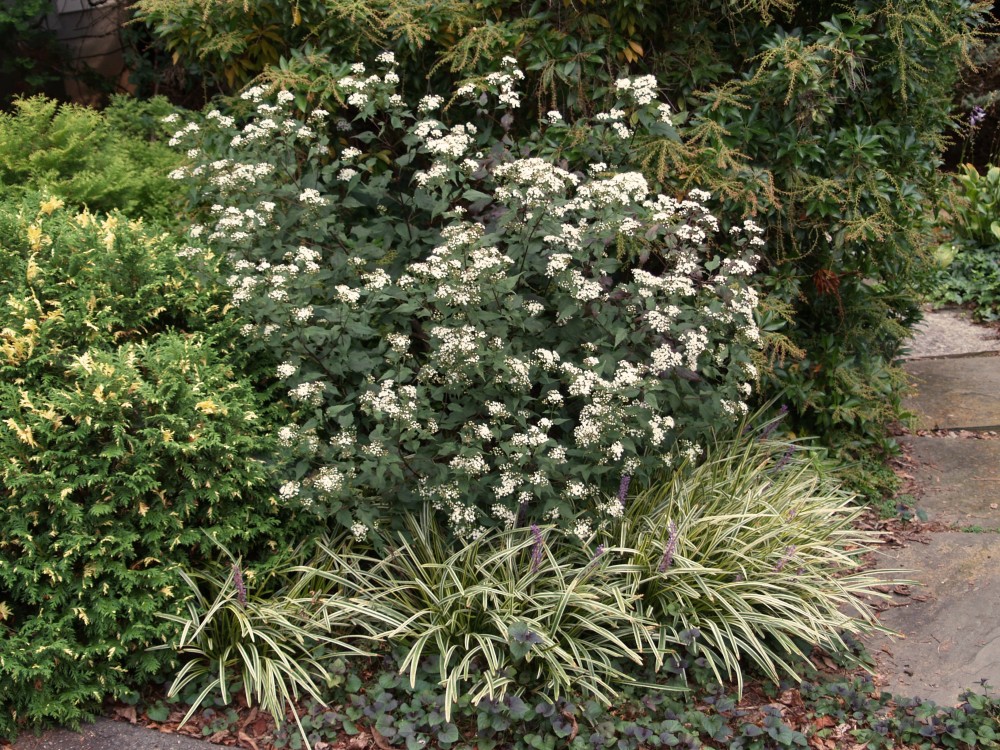 Unsurprisingly, after being eaten to a nub by tiny caterpillars a few weeks ago, violets (Viola labradorica) growing beneath liriope (Liriope muscari ‘Variegata’) and ‘Chocolate’ Joe Pye weed (Eupatorium rugosum ‘Chocolate’, below) have recovered to fill in quickly. My wife complains that the violets grow into every crack in the driveway, which is true, though as far as I can see this harms nothing. After dealing for years with bamboo that created its own cracks in the pavement, the tiny violets are hardly a concern.
Unsurprisingly, after being eaten to a nub by tiny caterpillars a few weeks ago, violets (Viola labradorica) growing beneath liriope (Liriope muscari ‘Variegata’) and ‘Chocolate’ Joe Pye weed (Eupatorium rugosum ‘Chocolate’, below) have recovered to fill in quickly. My wife complains that the violets grow into every crack in the driveway, which is true, though as far as I can see this harms nothing. After dealing for years with bamboo that created its own cracks in the pavement, the tiny violets are hardly a concern.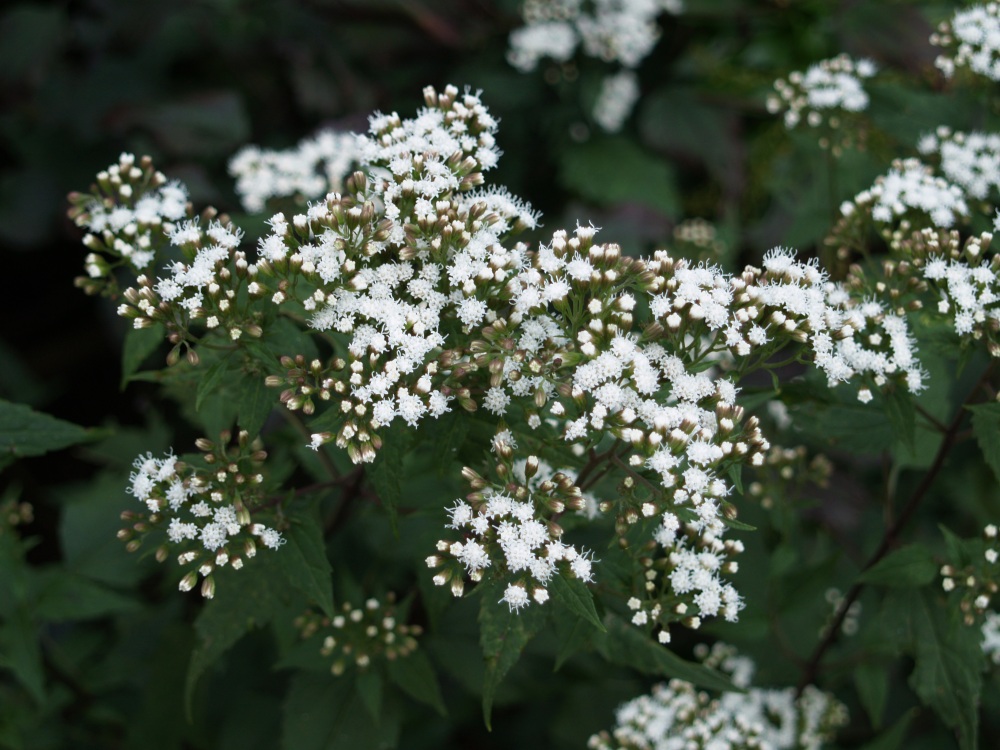
Both violets and Joe Pye are seedlings from plants that started nearby, and once identified they were encouraged to grow. Again, an accidental composition is at least the equal of anything the gardener has planned. ‘Chocolate’ Joe Pye does not attract the abundance of pollinators that are found on the native Joe Pye that grows in the nearby wetlands (and cultivars I’ve planted), but it is moderately attractive in foliage and flower while not growing as tall as even the most compact native selections. Unwanted seedlings of violets and Joe Pye are easily weeded out, and occasionally transplanted.
Scattered leaves of the purple Passionflower vine (Passiflora incarnata, below) were damaged by caterpillars through August, but this summer its growth has been prolific enough that I’ve been tempted to trim stems that trail over neighboring nandinas, and ones that hang low from a wire support along the roof line of the small summer house. Some years the vine barely makes it to the top of the support, but this year it has grown another eight feet, and delightfully with many more blooms.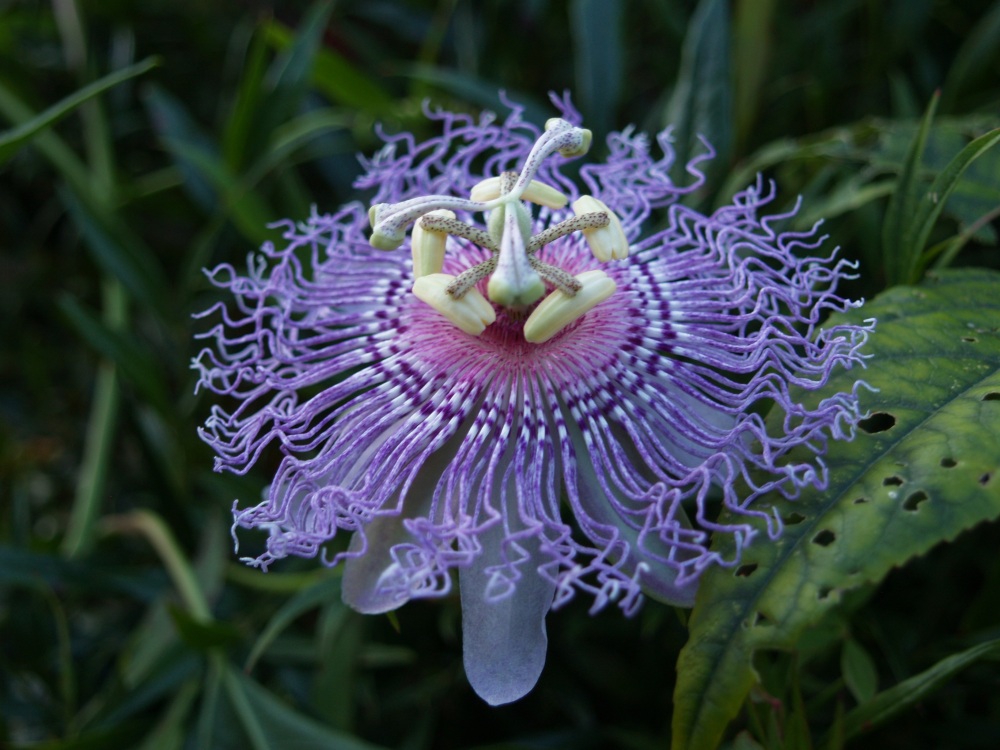
The yellow passionflower (Passiflora lutea) flowers for a much shorter period than the purple, though it has also grown vigorously this summer, and now it climbs from the Oakleaf hydrangea into the ‘Okame’ cherry that somewhat overhangs the koi pond. Both yellow and purple are marvelous vines, and I could not recommend one over the other, though the purple flowers are considerably larger and persist for a longer period. The more common purple passionflower is more readily available, but it also has a troublesome habit of sometimes waiting until early June to appear, which could be of concern to gardeners who are unaware. 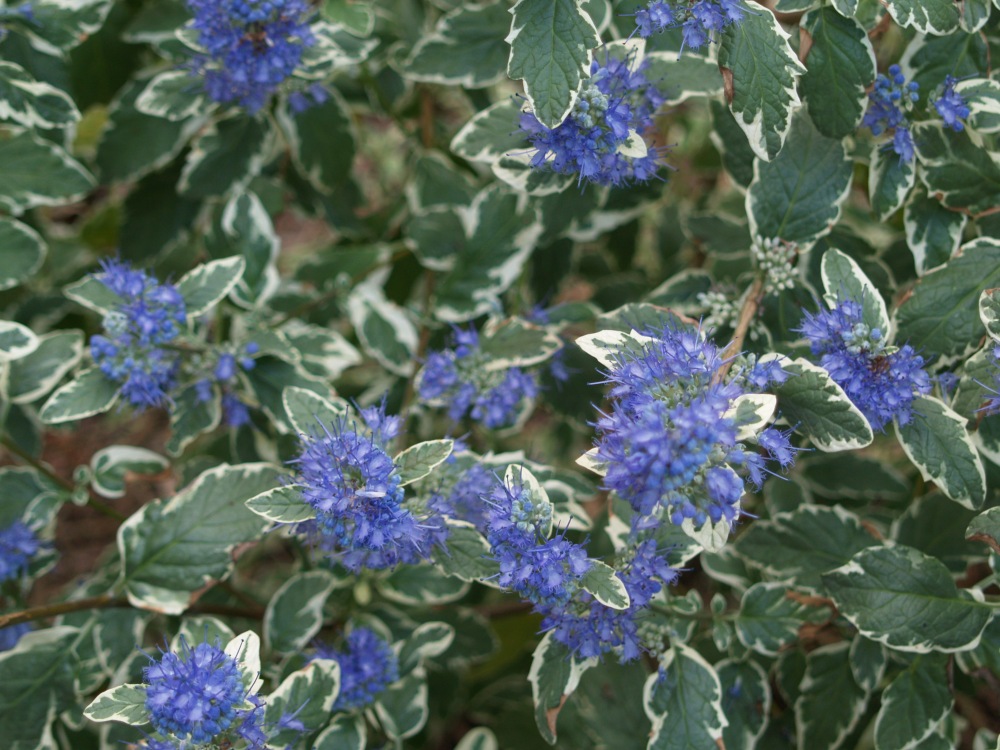
The early flowering Blue Mist shrubs are past bloom now, but ‘White Surprise’ (Caryopteris x clandonensis ‘White Surprise’, above) is at its peak in mid and late September. Bumblebees, in particular, feast on its nectar, and if I had a doubt earlier in the summer that bumblebees were as numerous as in past years, that question has now been satisfied. They’re everywhere. ‘White Surprise’ is a heavy bloomer, with more abundant flowers and variegated foliage that has more substance and more distinct variegation than ‘Snow Fairy’ blue mist (Caryopteris divaricata ‘Snow Fairy’).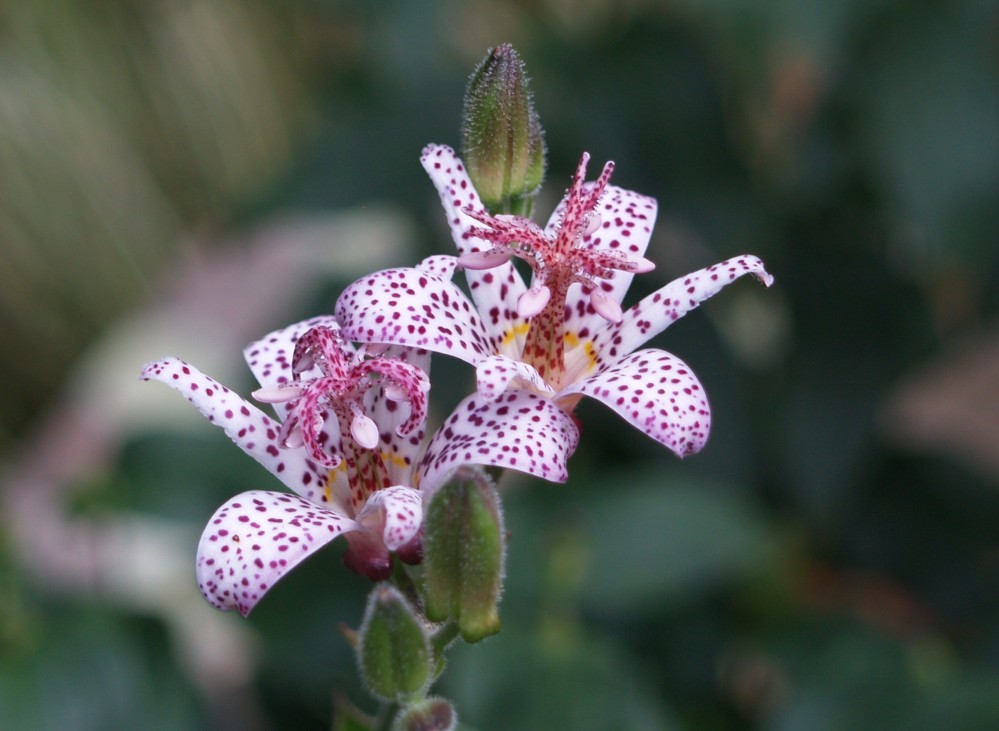
All toad lilies (Tricyrtis, above and below) are flowering now, though several have just begun, and these will flower long into October. I am confounded that these have not gained greater appeal, but I suppose they are more a gardener’s plant to be enjoyed close up, rather than one that it intended to improve the residence’s curb appeal viewed from the highway. This garden looks acceptable enough from the road, but it is oriented towards the house, and to be enjoyed walking the garden’s paths without much regard for the neighbors’ view.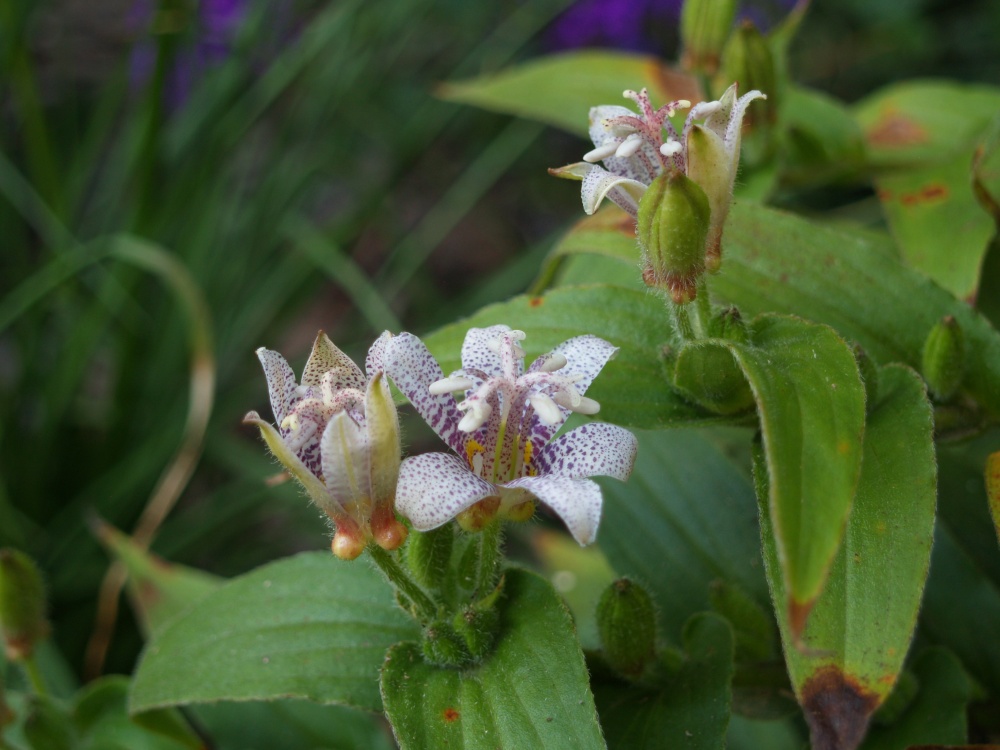
Just today, three new toad lily cultivars were planted, and I will be anxious to see their flowers in late summer next year. Their pollen coated anthers are similar in structure to the passionflower, and I’m often amused by the contortions of larger bees in gathering nectar from these flowers.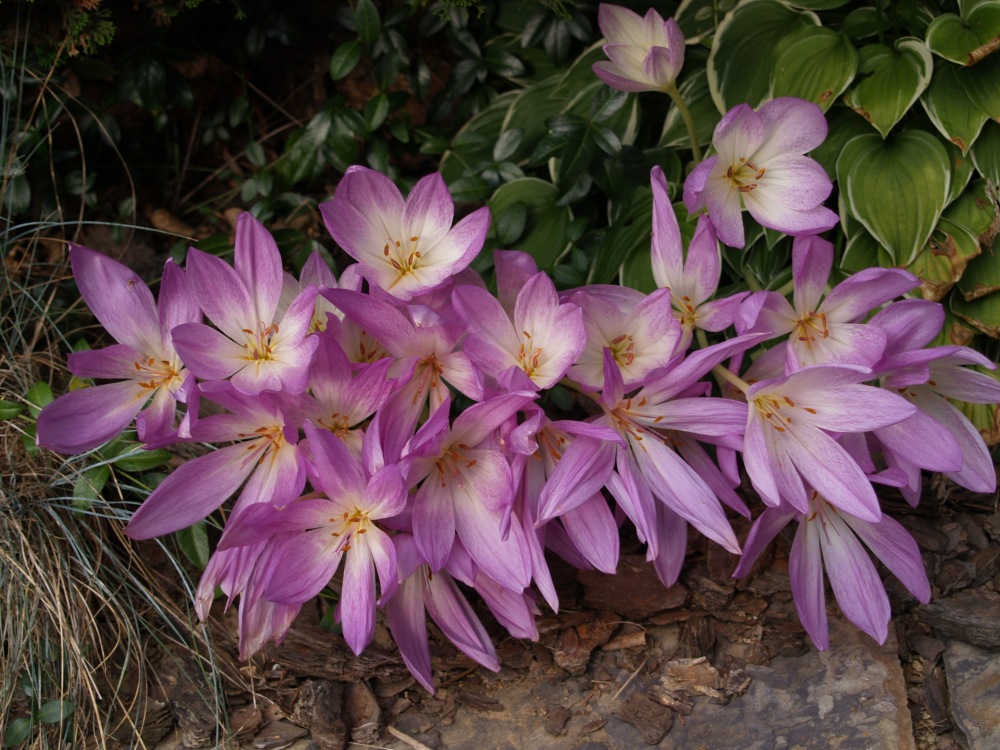
The autumn crocus (Colchicum, above) have filled in wonderfully, and I’ve declared in recent weeks that I must be reminded to purchase more when they are available to plant in the spring. Today, a spring bulb order for snowdrops, alliums, fritillarias, and dog tooth lilies was placed, and since it seems that I am incapable of making proper notes, my reminder to order the autumn crocus will be to order just as the snowdrops are fading in early March. I’ve recently noted a phone gadget that gives verbal reminders to pick up groceries on the way home from work and such, and I wonder if this could possibly nag me to remember such an important task in early spring.
What is eating my toad lilies, Dave? I know they have some blight or fungus as well.
On occasion I will lose an entire stem of a toad lily that flops so that it is damaged near the root, but otherwise I’ve experienced only a few dead leaf tips that I attribute to a lack of care (they are given no supplemental irrigation through the summer). I read that toad lilies can have problems with slugs, but I see very few slugs in the garden and since most of my toad lilies are in sunnier areas I have not had a problem.
Thanks, Dave and Gary. Will go on patrol for slugs and increase airflow for fungus. Gratefully,
Jean
My experience with toad lilies is that they suffer from mold or mildew. Mine bloom well every year but the leaves are usually black by then. This Spring I moved them to a dryer and less crowded, but still shady location. They are still recovering from the transplant but otherwise seem in better shape.
I’ve had hardly a problem worth mentioning with any toad lilies except that I’ve killed a few young plants due to neglect. I’m notoriously poor at watching out for new arrivals, but otherwise toad lilies have not been a problem. I do have one in deep shade that doesn’t flower, so it will be moved as soon as there’s enough rain to get some moisture back in the ground. I find that toad lilies perform much better in nearly full sun, and the new ones I planted will have five or six hours of midday sun in medium to damp soil. I expect them to perform exceptionally.
If you are lucky, the caterpillars munching those violets may be among the few species of Fritillary butterflies that rely on violets as their exclusive host plant. These interrelationships are another great joy of gardening!
Most caterpillars are welcomed into this garden, but violets rebound so quickly that it’s only a week or two before the caterpillars’ damage is covered over.